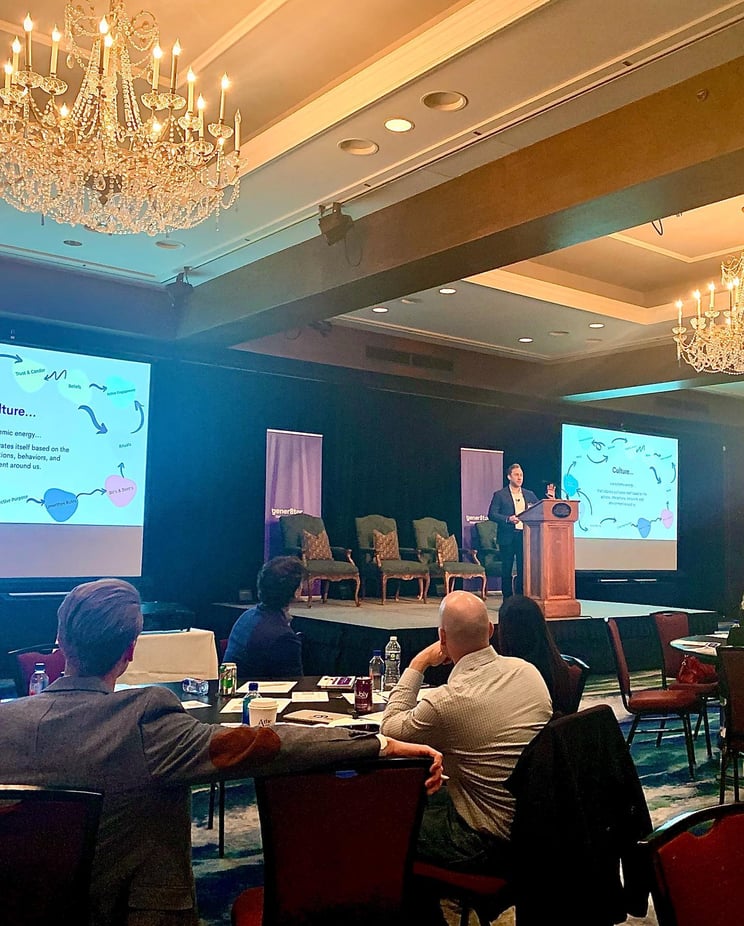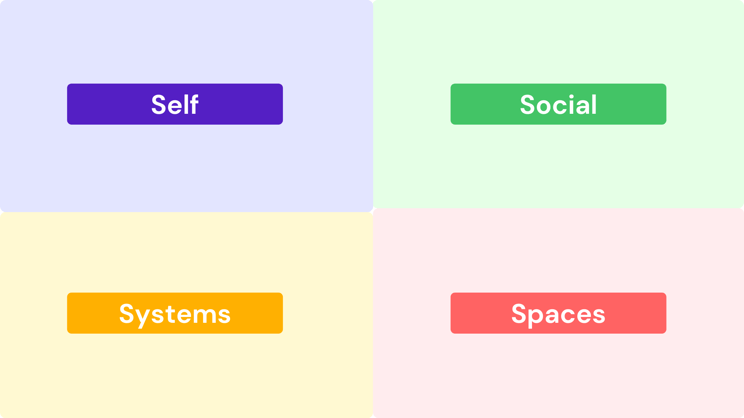What happens is companies place this large investment in capital and time for the transformational change and are only followed by leaders pounding their heads into the wall until they give up.
We recently led a workshop at Gener8tors Corporate Venture & Innovation Summit on what it takes to create a culture of innovation.
This two-day summit was an opportunity to engage with industry thoughts leaders & exchange best practices with peer executives navigating similar innovation journeys. From ideation & culture to a successful partnership, we openly discussed how you can implement successful practices in your innovation teams.

There were corporate venture teams, social impact leaders, project and product innovation teams, and all sorts of organizational leaders at this event.
There were two main questions in common from all of these groups - What do we mean by innovation and what does that actually look like? How do we create a culture and organization that lives and operates this way?
Luckily, these are two key questions we often tackle at Perennial Culture.
Our workshop led off by talking about what innovation is and what are the noticeable, measurable behaviors that reflect innovation?
It was extremely interesting hearing the diverse amount of answers as well as how many people struggled to answer what seemed to be simple questions.
Ask yourself as your read this - When you say you want to be innovative, what are the noticeable, measurable behaviors that reflect this? What are the outcomes that you are hoping to achieve by being "innovative?"
This portion of the discussion reminded me how often we jump into new initiatives (myself included!) and exciting topics within our companies or teams but don’t truly take the time to reflect on what that would actually look like. And asking ourselves, are we mentally and culturally ready to change the way we operate to embrace this change? And if not, what do we need to do to become ready?
A culture of innovation and evolution is not the traditional way of operating an organization so I remain skeptical when companies quickly say they want to become something they currently are not - especially when it requires changing several characteristics within the company.
To do this, we use a culture design framework that is powered by Virtuositeam's & BRATLAB's Behavior Change Model.
This model has been extremely powerful because conceptualizing a solution for our cultures is hard to understand and conceive. There is too much information and elements out in the world to make a real understanding of it. So we need a model that simplifies our cultures to our understanding so we can act appropriately.
Using Virtuositeams context design framework, we can understand the items that drive how we think, feel, and behave every single day.
(Want to train your people, project leaders, and leaders to be champions of change and utilize this model? Connect with us today!)

This model covers a number of key elements that drive our cultures within our companies.
This includes us as complex human beings. Understanding our own individual abilities to adopt new habits. This context is influenced by our own life experiences, thoughts, feelings, perceptions, mindset, and identity.
Here you might be thinking, how do we create an innovation mindset that is embraced throughout the company? How do we transition from a fixed mindset to a growth mindset?
The social context is made up of people that you interact with, in your workplace and in life, and the influence their behavior has over your own. The people within your social context at work include colleagues within your team or department, other peers in the business, direct reports, business leaders, and managers or supervisors. Family members and personal relationships are also part of the context.
Ask yourself, how do we promote collaborative behavior? How can we enable conflicting conversations to be progressive?
Spaces are the built environments that surround you in your everyday life. These can include your home, your neighborhood, the gym you go to.. etc. Most importantly for companies looking to make a change, it also includes the physical environments in which work takes place, such as your workstation, office, lobbies, common areas, and cafeterias.
So think to yourself, how to arrange space in a way that makes innovation easier (both physically and virtually)? How can we also modify space in a way to make interactions between people more frequent?
The Systems context is made up of the policies, processes, and rules that govern our behavior in our daily lives. These occur for us at many levels from the legislation that is unique to the country or state we live in, to the way in which we manage our daily routines. At work, these include the policies and procedures that define the way things are done – how people are trained, the dress code, health and safety, working and overtime hours, benefits, performance reviews, and general business processes.
Ask yourself, how can we modify situations in which innovation occurs more frequently and people understand that it's going to continuously happen on a regular basis. What rewards and penalties could be introduced? What are the daily routines and rituals you could build that reinforce innovation? What about weekly? Monthly? What about our meeting structures?
This is a simple introduction to these contexts that sit in the backdrop of our daily lives and greatly influence how we behave and how our cultures form. To go deeper, we look at the powers that reinforce these contexts and leverage those to influence change. Think of these as cultural levers of change.
What is going to be challenging for you is to understand where to focus your attention today for immediate impact, and where you should develop a long-term strategy that requires more time. That’s why system thinking and having an integrated approach are so impactful. This will allow you to understand what is change ready vs change-resistant. There are going to be certain elements that are easier to change than others. Or certain areas that you simply can't touch.
We find that companies and leaders often spend time on the areas that are the most difficult to impact. Hoping for this sweeping transformational change within their organizations. What happens is companies place this large investment in capital and time for the transformational change and are only followed by leaders pounding their heads into the wall until they give up.
This result comes from the lack of understanding of how our cultures form and change. Culture is this evolutionary energy that naturally evolves as its environment changes. That being the case, we need to create small monumental change that builds momentum over time.
So what are the take-aways?
- Develop a clear understanding of what you really mean when you say you want to be innovative.
- Clarify the noticeable, measurable habits and behaviors that reflect this "innovation."
- Utilize system thinking and an integral strategy to develop your strategy for new behaviors.
- Ask about our culture design and context design framework (powered by Virtuositeam & BRATLAB)
- Ask about our culture design and context design framework (powered by Virtuositeam & BRATLAB)
- Analyze and assess your culture for what is change ready vs change-resistant.
- Ask about our change readiness assessment. (powered by Virtuositeam)
- Ask about our change readiness assessment. (powered by Virtuositeam)
- Train and develop your innovation teams, project & product leaders, team leaders, and people to be agents of change - Powering culture change from all levels of the company
- Ask us about our professional development change agent training program.





